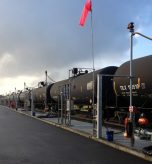Introduction
A leading industrial metals processor identified significant inefficiencies in their supply chain operations, with fragmented visibility and manual processes driving up costs across their network. Analysis revealed their transportation management system relied heavily on individual intervention, creating inconsistent processes between facilities and limiting optimization opportunities. With annual freight spend exceeding $4.7M and mounting service reliability concerns, leadership recognized the need for transformation. Our firm was engaged to conduct a comprehensive assessment and implement an integrated supply chain management platform that would deliver measurable cost savings while enhancing service performance.
At A Glance
Our veteran team brings deep expertise in supply chain transformation, particularly in the metals and manufacturing industries. Our team of seasoned professionals conducted a thorough assessment of the client’s operations across eight facilities, analyzing freight spend, carrier performance, and operational processes to identify improvement opportunities.
Key Requirements:
- Implement an integrated transportation management platform with real-time visibility, automated workflows, and advanced analytics to replace manual processes across facilities
- Establish standardized carrier management processes, including strategic sourcing, performance monitoring, and freight audit capabilities to reduce costs by 10-15%
- Deploy robust KPI tracking and reporting tools to drive continuous improvement in delivery performance and cost management
The Challenge
The client’s transportation management had evolved into a decentralized model where individual facilities operated independently, leading to inefficiencies and higher costs. Key issues included:
- Fragmented systems and manual processes requiring significant administrative effort
- Lack of standardized procedures for carrier selection and management
- Limited visibility into inbound shipments and real-time tracking capabilities
- Inconsistent performance metrics and reporting across locations
- Higher-than-market freight rates in several key lanes
- No formal continuous improvement program
The organization was particularly challenged by their reliance on manual processes for shipment planning and tracking, which resulted in reactive problem-solving rather than proactive management. Analysis revealed that two-thirds of shipments were not being routed from the optimal facility, creating unnecessary transportation costs. Additionally, the lack of integrated technology prevented effective sharing of carrier capacity and rates across locations.
PraxiChain Solution
- Deployed cloud-based transportation management system to automate planning, execution, and tracking of all shipments
- Implemented strategic carrier sourcing program combining volume across facilities to secure competitive rates and dedicated capacity
- Established centralized freight audit and payment process with automated validations and reporting
- Created standardized KPI dashboards tracking on-time delivery, cost per shipment, and carrier compliance
- Developed and implemented S&OP process to align inventory placement with customer demand
- Provided analytics tools for lane-level cost analysis and network optimization
Results
The implementation of our recommended solution delivered significant measurable improvements across the organization. Transportation costs were reduced by 15% through improved carrier sourcing and network optimization, representing annual savings of over $675,000. Order fulfillment accuracy increased to 98.5% while on-time delivery performance improved by 22%.
The automated transportation management platform reduced administrative workload by 65%, allowing staff to focus on strategic initiatives rather than tactical execution. Real-time visibility capabilities decreased customer service response times by 75% and enabled proactive exception management. The standardized KPI program drove continuous improvement, with monthly carrier performance reviews leading to a 45% reduction in service failures.
The new S&OP process improved inventory placement decisions, reducing out-of-zone shipments by 35% and cutting average delivery distances by 18%. These operational improvements strengthened customer relationships and positioned the organization for sustainable growth with a scalable, technology-enabled supply chain platform.















